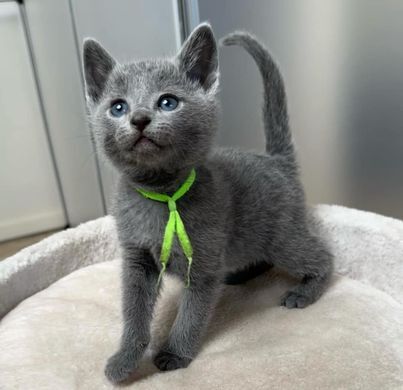Russian Blue cats occupy a unique space in the feline world, not simply because of their striking appearance but due to the quiet complexity of their behavior and temperament. While many breeds are celebrated for their sociability, playfulness, or vocal charm, the Russian Blue offers a different kind of companionship one rooted in emotional depth, subtle communication, and a refined sense of loyalty. Comparing them to other popular breeds reveals not just differences in personality but also in how they interact with their environment and the humans they choose to trust.
Unlike the Siamese, which thrives on constant interaction and vocal expression, the Russian Blue communicates through silence and presence. Their gaze, posture, and movement convey more than meows ever could. Owners often describe a sense of being watched not in a distant or aloof way, but with genuine attentiveness. This breed doesn’t demand affection; it offers it selectively and meaningfully. That emotional restraint is not a lack of warmth but a sign of discernment. In contrast, breeds like the Maine Coon or Ragdoll are more openly affectionate, often greeting strangers with enthusiasm and adapting quickly to new environments. Russian Blues take their time, and once trust is earned, it is rarely withdrawn.
Their intelligence is another defining trait. Russian Blues are strategic thinkers, often solving problems with quiet persistence. They learn routines quickly, anticipate human behavior, and adapt their actions accordingly. This cognitive sharpness sets them apart from breeds that rely more on instinct or impulse. While Bengals may exhibit bursts of energy and curiosity, Russian Blues approach new stimuli with caution and calculation. Their play is purposeful, often involving toys that challenge their minds rather than just their reflexes.
Environmental preferences further highlight their uniqueness. Russian Blues flourish in calm, structured spaces. Loud noises, unpredictable schedules, or frequent visitors can cause stress, leading them to retreat rather than react. This sensitivity is not fragility, it’s a reflection of their finely tuned awareness. Breeds like the British Shorthair or American Curl may tolerate chaos with ease, but the Russian Blue values serenity. Providing quiet zones, consistent routines, and respectful boundaries isn’t just ideal it’s essential for their well being.
Grooming and physical care also differ subtly. The Russian Blue’s dense double coat requires minimal maintenance, yet benefits from weekly brushing to preserve its natural luster. Unlike long-haired breeds such as the Persian or Himalayan, which demand daily grooming to prevent matting, the Russian Blue’s coat is self-regulating but still responds well to gentle attention. This grooming ritual becomes a moment of connection, allowing owners to observe changes in mood or health that might otherwise go unnoticed.
Socialization strategies must be tailored to their temperament. Russian Blues are not antisocial, but they are selective. Early exposure to varied environments helps build confidence, yet forcing interaction can backfire. Patience and consistency yield far better results than novelty or stimulation. Breeds like the Abyssinian or Tonkinese may thrive on new experiences, but the Russian Blue prefers familiarity and depth over variety.
What makes the Russian Blue truly unique is its blend of emotional intelligence, quiet loyalty, and thoughtful engagement. This breed doesn’t fit into conventional categories of feline behavior. It challenges the notion that cats are either aloof or needy, offering instead a model of companionship that is intentional, respectful, and enduring. For those willing to listen closely and move slowly, the Russian Blue reveals a personality that is as rich and rewarding as it is understated. Compared to other breeds, it offers a relationship that feels less like ownership and more like mutual understanding a rare and beautiful dynamic in the world of pets.
Related Cat Breeds:

